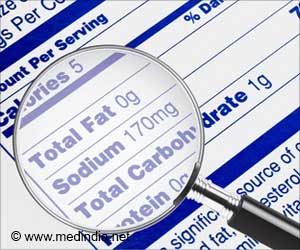Discover how Americans can meet their essential amino acid needs through balanced diets, promoting muscle health, energy, and overall well-being.

Amino Acid Intake and Conformance With the Dietary Reference Intakes in the United States: Analysis of the National Health and Nutrition Examination Survey, 2001–2018
Go to source) Amino acids, the essential components of protein in both food and human muscle, are the focus of two new studies. One study examines the typical amino acid intake of Americans, while the other explores the relationship between amino acid consumption and muscle health in older adults. //
‘Good news for #protein lovers! Most #Americans over 19 are getting enough of all essential #aminoacids. #nutrition’





Overall, “the majority of the U.S. population is meeting the minimum dietary recommendations for both total protein and individual amino acids,” the research found. Additionally, within the range of intakes consumed by older Americans, higher essential amino acid consumption does not correlate with higher lean mass or function. Some dietary recommendations urge older adults to consume more protein, and specific essential amino acids, in order to support muscle mass and strength. This is an important lifestage due to normal age-related declines in muscle mass.
However, associations observed in the National Health and Nutrition Examination Survey (NHANES) do not show muscle-related benefits with greater essential amino acid intake in this population.
A Comprehensive Study of Amino Acid Intake in Americans
The lack of complete amino acid composition data in food composition databases has made determining population-wide amino acid intake difficult – a gap that is addressed by this new scientific contribution. This cross-sectional study of Americans characterizes intakes of each amino acid and adherence to dietary requirements for each essential amino acid.According to first author Claire Berryman, PhD, RD with the Pennington Biomedical Research Center at Louisiana State University, “This study was the first to characterize intakes of each amino acid in the US population by gender, age, and race and ethnicity. The analysis allowed us to get a picture of current amino acid intake trends in the U.S. population. Based on our findings, Americans are meeting and exceeding minimum recommendations for all the essential amino acids.”
Advertisement
This cross-sectional study evaluated associations between current usual amino acid intakes and body composition, muscle strength, and physical function in U.S. adults 65 years or older.
Associations are limited by the fact that intake in a given moment of time does not reflect a lifetime of intake which would be expected to influence body composition. Furthermore, relationships between lean mass and function and essential amino acid intakes higher than the range consumed by the population could not be evaluated.
According to author Claire Berryman, “The findings were surprising to us. We found that eating more essential amino acids in the diet was not associated with lean mass, muscle strength, or physical function in older adults and eating more of some essential amino acids was related to greater fat content in older females."
These findings should be interpreted cautiously as they only represent a snapshot in time since we did not follow the participants for any length of time. However, the findings are important and should be explored further given widespread nutritional advice to consume high protein diets and the quantity of high protein foods and supplements on the market. In addition, it is important to keep in mind that consuming any macronutrient — protein, carbohydrate, or fat — in excess of calorie needs will lead to weight gain.
Reference:
- Amino Acid Intake and Conformance With the Dietary Reference Intakes in the United States: Analysis of the National Health and Nutrition Examination Survey, 2001–2018 - (https://iafns.org/publication/amino-acid-intake-and-conformance-with-the-dietary-reference-intakes-in-the-united-states-analysis-of-the-national-health-and-nutrition-examination-survey-2001-2018/)














